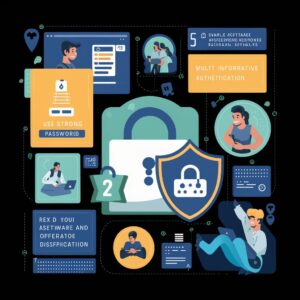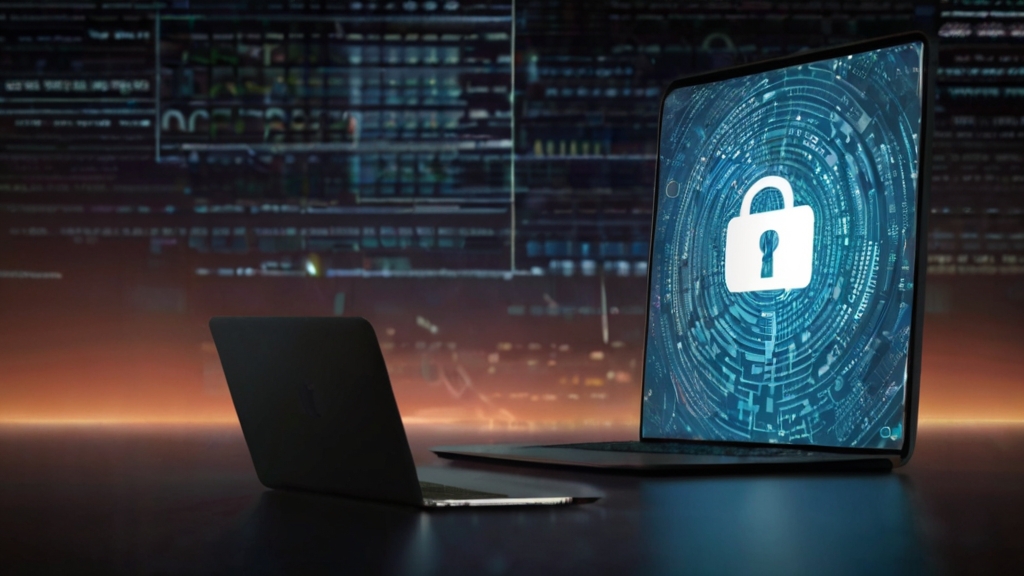Fortifying Your Fortress: Best Ways to Safeguard Your Digital Identity
In today’s hyper-connected world, our digital identities are intricately woven into the fabric of our lives. From online banking and social media profiles to professional networks and email accounts, a secure digital presence is paramount. However, this interconnectedness also exposes us to a multitude of threats – data breaches, phishing scams, and identity theft – all lurking in the digital shadows.
Fear not, for this guide equips you with the knowledge and practical steps to safeguard your digital identity. We’ll delve into essential practices, explore robust security tools, and unpack strategies to navigate the online landscape with confidence.
The Value of Your Digital Identity
Before diving into defense, let’s understand what we’re protecting. Your digital identity encompasses all the information about you that exists online. This includes:
- Personal Details: Name, address, phone number, date of birth, and Social Security number (in some regions).
- Financial Information: Bank account details, credit card numbers, and investment records.
- Online Accounts: Login credentials for social media, email, online shopping platforms, and professional networks.
- Publicly Available Data: Posts on social media, online reviews, and search engine results.
Protecting this information is crucial to prevent financial loss, reputational damage, and even control over your online persona.
Building Your Digital Defense: A Multi-Layered Approach
Imagine your digital identity as a fortress. To ensure its security, we need to build strong walls, vigilant guards, and a well-maintained infrastructure. Here’s a breakdown of the essential layers of defense:
1. The Bedrock: Strong Passwords and Multi-Factor Authentication (MFA)
- Unique and Complex Passwords: Avoid dictionary words, birthdays, or pet names. Use a combination of uppercase and lowercase letters, numbers, and symbols. Consider a password manager to generate and store strong passwords for different accounts.
- Multi-Factor Authentication (MFA): This adds an extra layer of security beyond passwords. It could involve a code sent to your phone, fingerprint recognition, or a security key. Enable MFA for all accounts that offer it, especially email, banking, and social media.
Checklist:
- Created unique passwords for all your accounts?
- Enabled MFA for all accounts that offer it?
2. The Walls: Secure Browsing Practices and Software Updates
- Beware of Phishing Scams: Don’t click on suspicious links or open attachments from unknown senders. Verify the legitimacy of emails before responding.
- **Secure Websites: **Look for the padlock symbol in the address bar when entering sensitive information. Ensure the website URL begins with “HTTPS” (not “HTTP”), indicating a secure connection.
- **Antivirus and Anti-Malware Software: **Install reputable antivirus and anti-malware software, and keep it up to date with the latest security patches.
- **Software Updates: **Keep your operating system, web browser, and other software applications updated with the latest security fixes.
Checklist:
- Installed reputable antivirus and anti-malware software?
- Enabled automatic updates for software and operating systems?
3. The Watchtowers: Privacy Settings and Social Media Savvy
- Social Media Privacy Settings: Review and adjust the privacy settings on all your social media accounts. Control who can see your posts, friend requests, and profile information.
- Think Before You Share: Be mindful of what information you share online, especially on public platforms. Avoid posting sensitive details like your home address, phone number, or financial information.
- Beware of Oversharing: Limit the amount of personal information you share on social media, especially with people you don’t know well.
Checklist:
- Reviewed and adjusted privacy settings on all social media accounts?
- Developed a habit of thinking before you share online?
4. The Moat: Securing Your Wi-Fi Connections
- Public Wi-Fi: Avoid conducting sensitive transactions (online banking, credit card purchases) on public Wi-Fi networks. These networks are often unsecure and make you vulnerable to hackers.
- Home Wi-Fi Security: Use a strong password for your home Wi-Fi network and enable encryption (WPA2 or WPA3). Consider using a guest network for visitors, keeping your personal devices separate.
Checklist:
- Avoided using public Wi-Fi for sensitive online transactions?
- Secured your home Wi-Fi network with a strong password and encryption?
5. Vigilance and Monitoring: Staying Ahead of Threats
- Regular Credit Report Checks: Regularly monitor your credit

Vigilance and Monitoring: Staying Ahead of Threats (Continued)
- Regular Credit Report Checks: Regularly monitor your credit report for any suspicious activity, such as unauthorized accounts or inquiries. You can obtain a free credit report from each of the three major credit bureaus (Equifax, Experian, and TransUnion) once a year.
- Data Breach Notifications: Sign up for data breach notification services. These services will alert you if your personal information has been compromised in a data breach.
- Be Wary of Unfamiliar Requests: Don’t provide your personal information or click on links in unsolicited emails, phone calls, or text messages, even if they appear to be from legitimate sources.
Checklist:
- Signed up for free credit report monitoring from each major credit bureau?
- Subscribed to data breach notification services?
Beyond the Basics: Additional Security Measures
While the core practices outlined above are essential, consider these additional layers of protection:
- Virtual Private Networks (VPNs): A VPN encrypts your internet traffic, making it more difficult for hackers to steal your data, especially when using public Wi-Fi.
- Endpoint Security Software: These programs provide comprehensive protection against malware, ransomware, and other cyber threats.
- Biometric Authentication: Fingerprint scanners, facial recognition, and iris scanners offer an extra layer of security for accessing devices and accounts.
Remember: Security is an ongoing process. Stay informed about the latest threats and update your security practices accordingly.
Conclusion: Taking Control of Your Digital Identity
By implementing the strategies outlined in this guide, you can build a robust defense for your digital identity. Remember, a secure online presence empowers you to navigate the digital world with confidence, allowing you to reap the benefits of technology without compromising your safety. Take control of your digital footprint, fortify your defenses, and enjoy the peace of mind that comes with a well-protected online identity.
